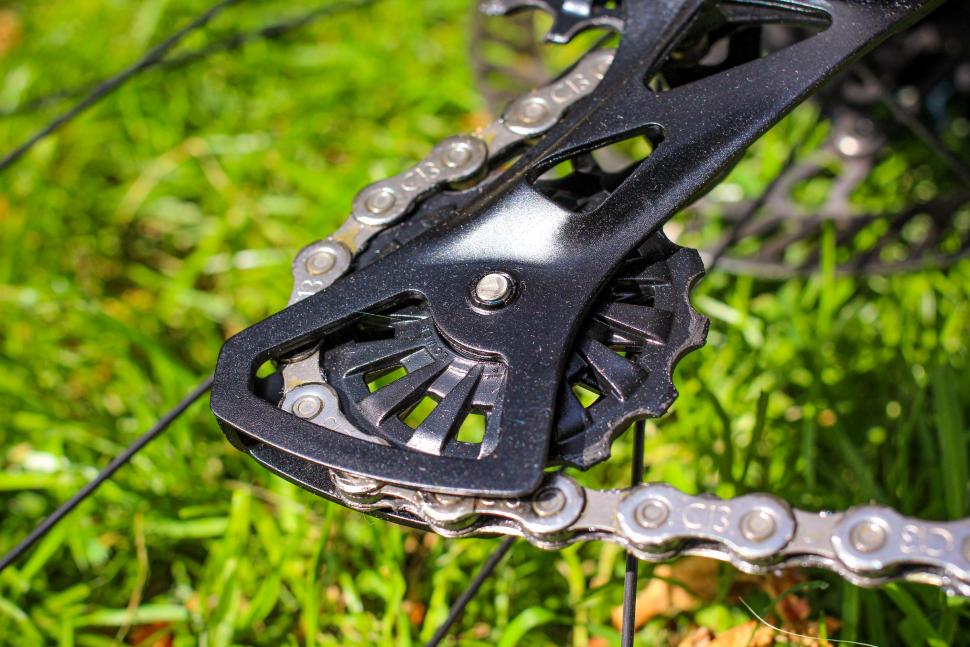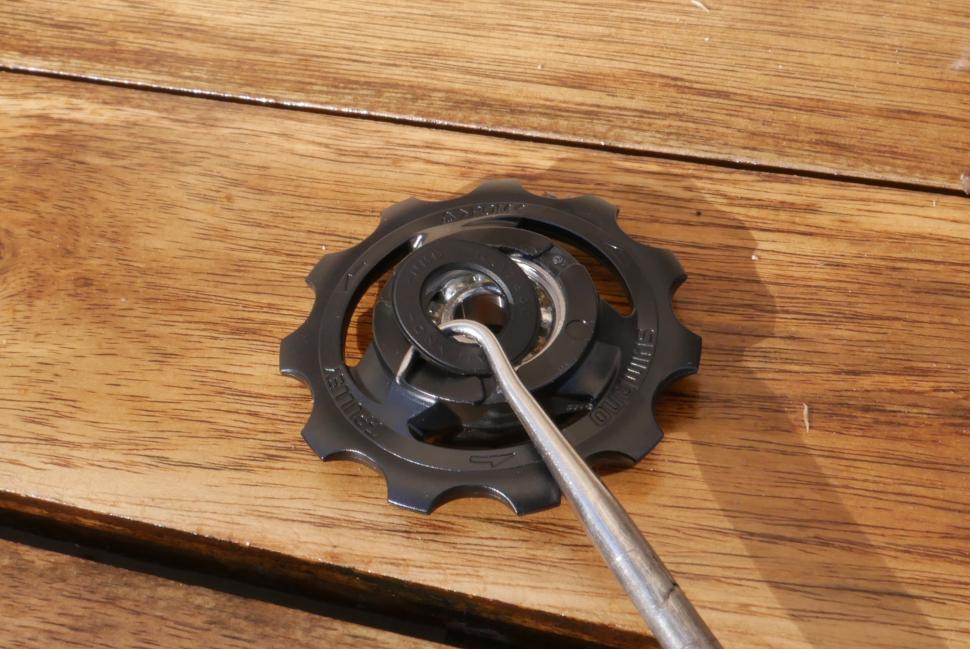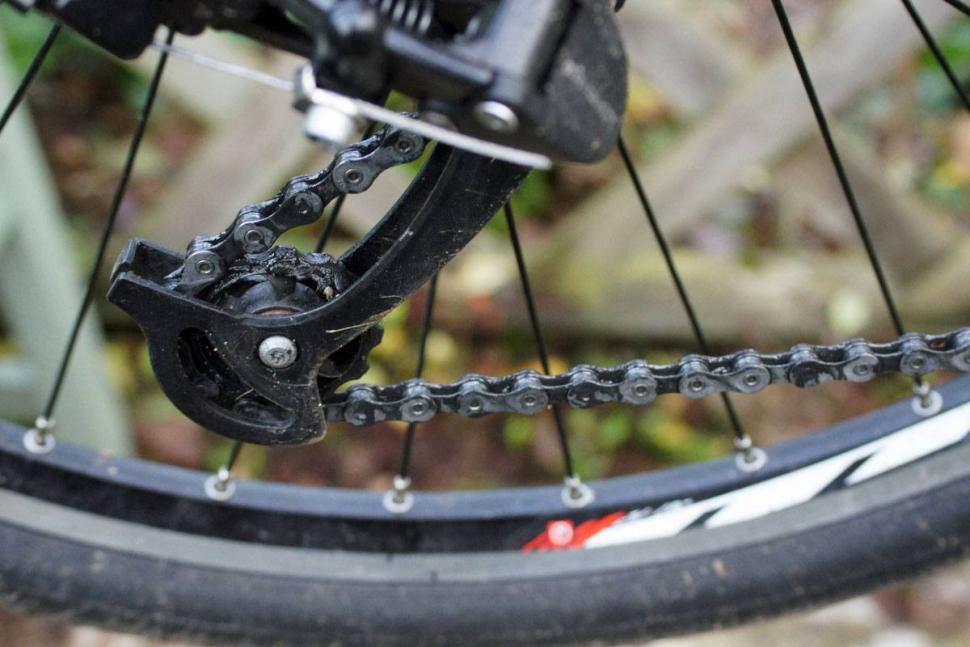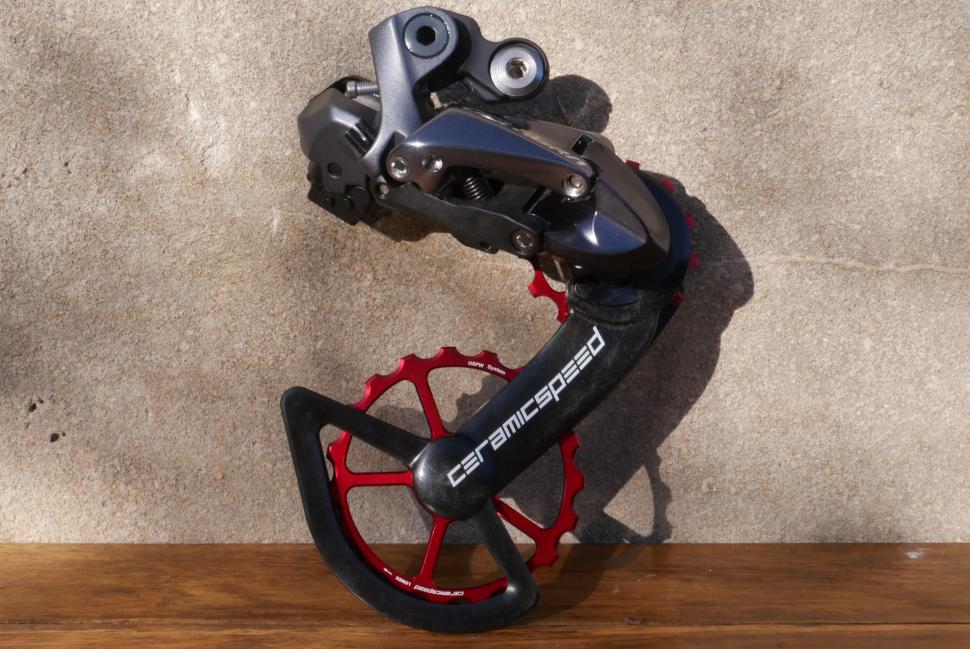- News
- Reviews
- Bikes
- Accessories
- Accessories - misc
- Computer mounts
- Bags
- Bar ends
- Bike bags & cases
- Bottle cages
- Bottles
- Cameras
- Car racks
- Child seats
- Computers
- Glasses
- GPS units
- Helmets
- Lights - front
- Lights - rear
- Lights - sets
- Locks
- Mirrors
- Mudguards
- Racks
- Pumps & CO2 inflators
- Puncture kits
- Reflectives
- Smart watches
- Stands and racks
- Trailers
- Clothing
- Components
- Bar tape & grips
- Bottom brackets
- Brake & gear cables
- Brake & STI levers
- Brake pads & spares
- Brakes
- Cassettes & freewheels
- Chains
- Chainsets & chainrings
- Derailleurs - front
- Derailleurs - rear
- Forks
- Gear levers & shifters
- Groupsets
- Handlebars & extensions
- Headsets
- Hubs
- Inner tubes
- Pedals
- Quick releases & skewers
- Saddles
- Seatposts
- Stems
- Wheels
- Tyres
- Health, fitness and nutrition
- Tools and workshop
- Miscellaneous
- Tubeless valves
- Buyers Guides
- Features
- Forum
- Recommends
- Podcast
feature
 Replacing Jockey Wheels-3
Replacing Jockey Wheels-3When to replace your jockey wheels - avoid an expensive mechanical issue and improve your shifting
Jockey wheels are one of those parts on your bike that do a lot of work, yet rarely get any love. While you might not think of them as a major component, worn jockey wheels can cause a drop in shift quality and a highly irritating noise; and in the worst-case scenario, an expensive mechanical disaster. They’re easy to fix, so let us show you how...
Poor shifting or a noisy drivetrain are both rather irritating. You might have already tried a new chain lube in an attempt to silence the squeak, or changed the shift cables in a bid to improve shifting; but have you considered that those little jockey wheels might be the cause of your drivetrain woes?
What do jockey wheels do?
First, it’s important to know exactly what jockey wheels - which are also referred to as 'pulley wheels' - do for the smooth and efficient running of your drivetrain. They are very important.
Your rear derailleur features an upper and a lower jockey wheel, and these perform different jobs. The upper jockey wheel, also known as the guide pulley, is the one that is in charge of shifting duties. It quite literally guides the chain in the direction that it needs to go when the derailleur makes a shift.
The lower jockey wheel is also known as the tension pulley, and this inventive name was given to it because it helps to keep the chain tensioned in each gear combination.
The features of each jockey wheel are slightly different. While both appear similar on most systems, generally featuring plastic teeth and a bearing on which the wheel turns, the guide pulley wheel often features more lateral play. Far from being a design flaw, this play actually helps the drivetrain as it compensates for marginal errors in indexing. It also helps the system to run smoothly when the chain line isn’t perfectly straight.
How to look after them
So that's what jockey wheels do, and as you might have realised by now, happy jockey wheels are important for a fully functioning drivetrain. Looking after them is easy, and we’d recommend making a jockey wheel service part of your bike's deep-clean. Given them some attention once a year, and you shouldn’t hear much from them. They are, after all, rather resilient little things.
> 10 easy steps to clean and lube your bike's chain
The time will come, however, for you to service those jockey wheels. The only way to work on them is to take them out of the derailleur, and the easiest way to gain access is to drop the rear wheel out.
We mentioned the differences between the two jockey wheels above, and also the fact that they look very similar. To avoid mixing them up, work on one at a time. You’ll need the appropriate Allen key, some degreaser, a rag, clean grease and some Loctite.
Undo the bolt in the centre of the jockey wheel and remove it, allowing the jockey wheel to slide out. Be careful not to drop the aluminium caps that sit on each side of the jockey wheel.
Next, we need to get into the centre of the jockey wheel. This is where you’ll find either a cartridge bearing or a bushing. The simplest to service is the bushing. Simply pop them out, clean the surfaces with a clean rag, dab some heavy lithium grease on the clean surfaces and push the bushing back in.
> Review: Tacx T4035 Jockey Wheels
If yours has a cartridge bearing, then you’ll need to remove the seal. Carefully lift this up with a flat blade before cleaning the bearings with a degreaser, rinsing, drying and then re-lubing.
When you go to reinstall, you need to ensure the jockey wheel is turning the correct way because, yes, some are directional. You’ll also need to get the chain wrapping around the jockey wheel correctly. Forgotten? The chain needs to go to the right and over the upper jockey wheel, and left and under the lower jockey wheel.
When reinstalling the retention bolt, best practice often dictates that you use a thread locker as the maximum torque on the bolt can be quite low.
> The Lazy Way to Clean your Bike
Once everything is back together you can pop the wheel back into your bike and test the gears. Ideally, you’ll now have a silent system that responds properly to gear adjustments.
If you find that there is a terrible noise now coming from the rear derailleur, check that your chain isn’t rubbing on the central derailleur cage tab. If it is, you’ll need to remove a jockey wheel to get the chain in the correct place.
When to replace
While well-serviced jockey wheels can work for years, there will come a point when these workhorses will need to be replaced.
If the teeth on your jockey wheels are heavily worn, then this can negatively affect the quality of your shifting as the teeth can fail to engage. Notice that your chain jumps off the jockey wheel quite a bit? This is the cause.
A more serious scenario is where the chain jumps off the jockey wheel and wedges in the derailleur cage during a sprint or on a climb. This sudden halt in movement can lead to a ripped off derailleur, which is a seriously costly problem.
If you find heavy rotational resistance when you’re checking your jockey wheels, then this is also a sign that the jockey wheels need replacing.
Upgrade options
There are opportunities to upgrade pretty much everything on your bike, and jockey wheels are no exception. Some brands will promise lower friction and the saving of a few precious watts. If you’re not interested in very marginal performance gains, then we’d recommend swapping like-for-like as this is the best way to maintain shifting quality. Make sure you get jockey wheels to match your system; for example, a Shimano 11-speed 105 derailleur requires 11-speed jockey wheels,
Larger jockey wheels are an option. These can be purchased as individual jockey wheels, from brands such as C-Bear or CeramicSpeed. Installing into your existing derailleur cage means that you are limited in size to around 12 teeth.
> Should you buy ceramic bearings? We ask the experts
There is also the option to buy something like the CeramicSpeed OSPW system, which replaces your existing derailleur cage. The jury is out on how many watts you’ll save, but they look cool and for cyclocross riders, the OSPW system seems to clear mud a bit better.
Ceramic bearings are another upgrade option; but as we've discussed with various experts in our in-depth feature on the subject, the advantages of these are also debatable.
Latest Comments
- Bobby B 17 min 33 sec ago
By the sound of it, and his previous record, it's opnly a matter of time before 'nose-biter' becomes a knife-wielding madman, or worse, with...
- ktache 33 min 2 sec ago
Looking forward to the testing of the Smart Lever. And real world after a bit. The videos are interesting.
- PRSboy 53 min 20 sec ago
Rather better than my effort on Coll de Rates at 28:05, but in my defence it was 30c, I'd had a big lunch and a beer and climbed it on an old MTB I...
- Secret_squirrel 1 hour 7 min ago
Surely these are only as good as your knowledge of their placement? They seem a bit pointless without a decent amount of Sports Massage / Physio...
- lesterama 1 hour 21 min ago
Nice. I'd ride that Madone now.
- Geoff Ingram 1 hour 33 min ago
Completely agree. At 80kg or so all up 45psi is good for my gravel bike with 39mm tyres. And after a fair while, when it drops to 35 I put it up to...
- mattw 1 hour 50 min ago
This one seems to work the other way, and be genuine Nimbyism - Pimlico wanting to keep its passports....
- HollisJ 3 hours 1 min ago
Thankfully all the terrible spelling errors in my reviews are erased by the skillful subbing team before they go online. ...






Add new comment
7 comments
"for example, a Shimano 11-speed 105 derailleur requires 11-speed jockey wheels"
Why is this? I understood that jockey wheels were non speed dependent? Although 9, 10 and 11 speed chains vary in width they all have the same internal width (as it's the chain plate thickness which determines the chain width) so it follows that the same pulley wheels will route all 3 chain speeds so long as the wheels are not so wide to not fit in the cage. I haven't come across any which are.
Just asking.
AJ
I find that incorrect jockey wheels are either too thin or too fat for the derailleur cage., but I don't think it is necessarily a function of speed. Sometimes a different speed jockey wheel may be okay, but at others the same speed jockey wheel won't work.
I have more than one jockey wheels that I can't use because they are the wrong size for my derailleur cage. Shimano charge a lot for jockey wheels but aliepress one are a bit hit or miss.
More speeds tend to have more teeth.
There a reason why the big 2 don't use oversize jockey wheel
The jury might be out on how many watts oversize pulley wheels save but it would have to be a significant amount before I would bolt something as hideous as them on my bike. I do not agree with your comment that they look cool, that is an opinion and my opinion is that they look terrible.
Dylan Johnson did a very interesting video on YouTube discussing marginal gains.
You can save more watts with the right socks than with oversized pulleys.
He also showed some research which suggested 1x systems (or 2x with smaller chainrings that require you to use tiny sprockets) lose you more watts than you save with an oversized pulley. Basically chain wrap increases friction so e.g. 50/25 is a more efficient gear than 44/22 etc. etc. (although I guess that is why the oversized pulleys exist!)
|I still stick to my theory that oversized pulleys cost more in aero drag than they will save in mechanical resistance.